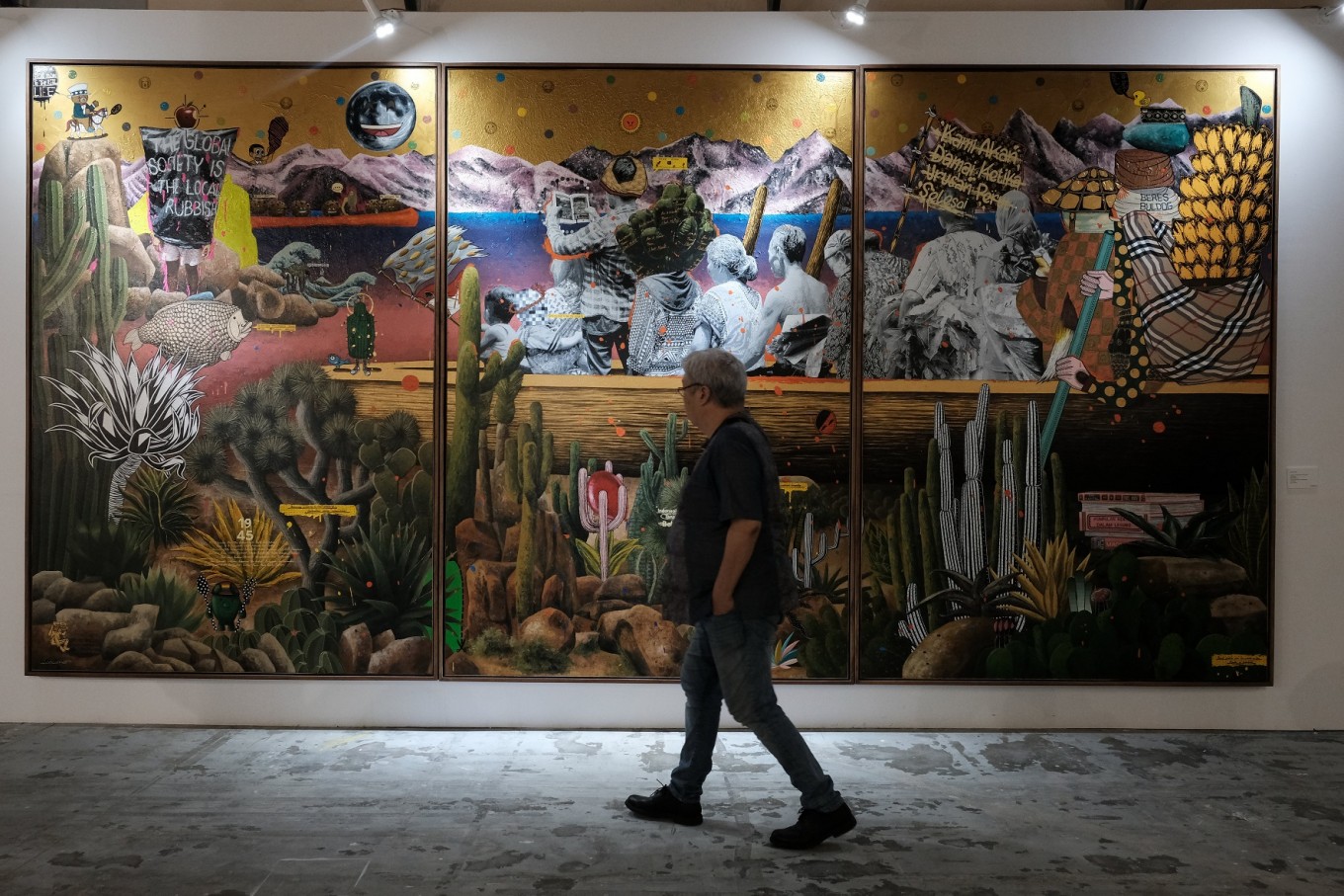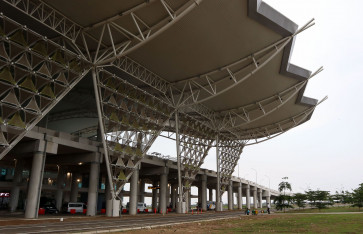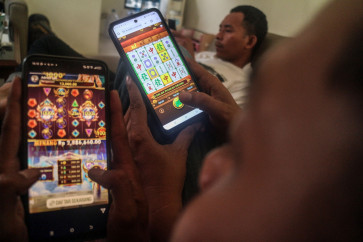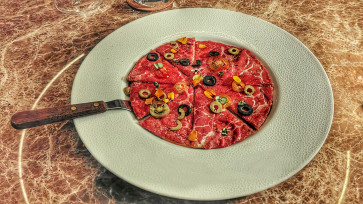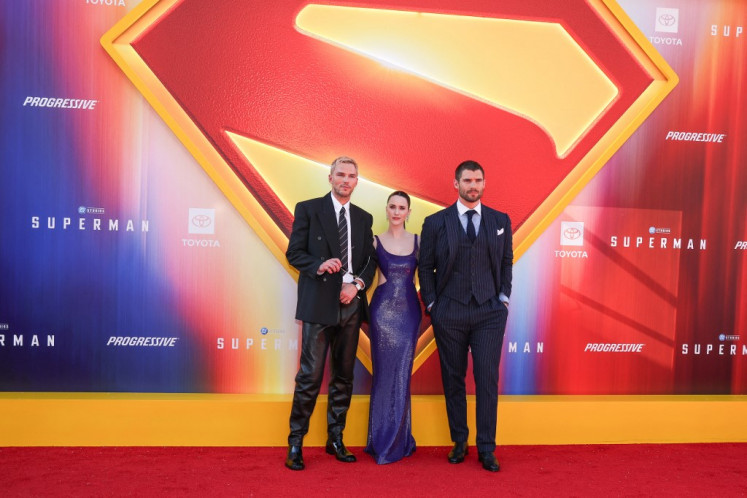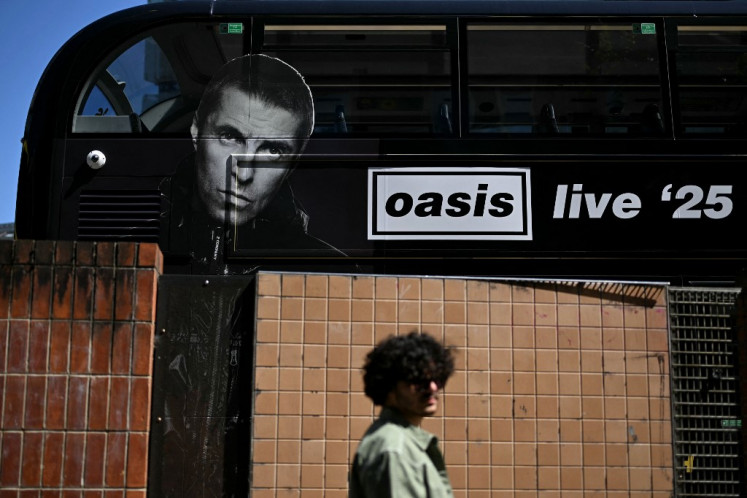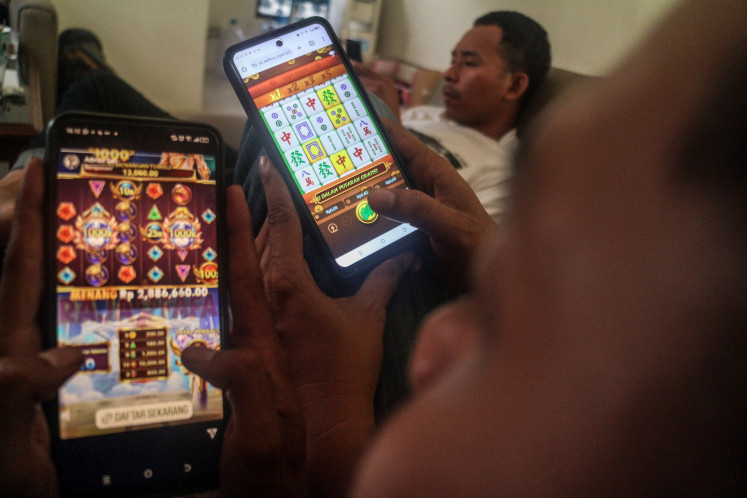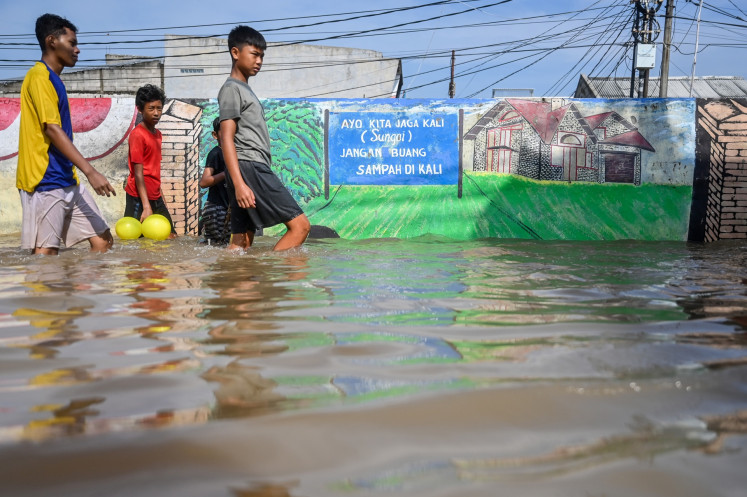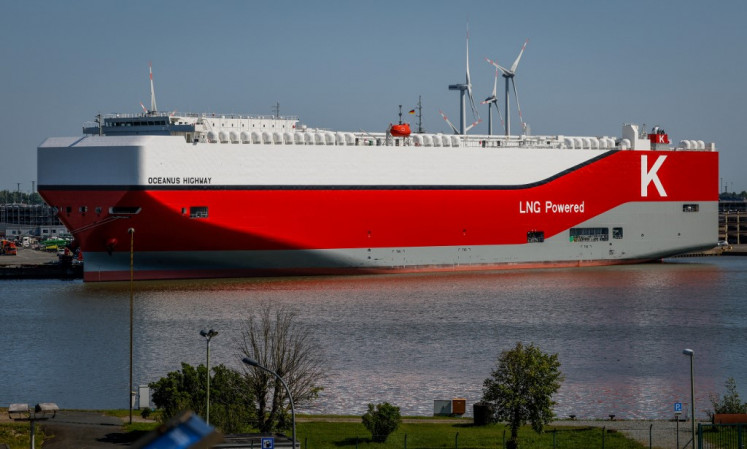Popular Reads
Top Results
Can't find what you're looking for?
View all search resultsPopular Reads
Top Results
Can't find what you're looking for?
View all search resultsWhat the future holds for Art Jakarta and other fairs
What could the future of the art fair look like?
Change text size
Gift Premium Articles
to Anyone
T
he May cancelation of Art Jakarta, Indonesia’s premier art fair that had been scheduled for August 28-30 at JCC Senayan, came as no surprise to the regional art world. The year 2020 initially spelled disaster for international art fairs. The disruption began in Asia with the social unrest in Hong Kong and then the dramatic impact of COVID-19. The most prestigious event in the region, Art Basel Hong Kong, responded in early February by delaying the fair just six weeks before its opening day.
The escalation of the pandemic in March compelled governments around the world to shut down nonessential businesses, schools, borders and put citizens in lockdown. The restrictions led to the closure of art infrastructure, requiring exhibitions, events and art fairs to be postponed. The response was a digital renaissance. Content and platform developers were swift with the advancement of online viewing rooms and auctions, exhibitions and art fairs offering some practical solutions for the global art economy. Art Basel Honk Kong shifted its focus from a new platform already under construction to developing Art Basel Hong Kong Online Viewing Rooms they launched the very week the fair was scheduled to open.
I asked Art Jakarta Fair consultant Gil Schneider what the steps were for fair director Tom Tandio and his team in preparing for their next event. “Right now, we are closely monitoring the art market and the COVID-19 situation. Later this year, we will start the detailed plans for the fair,” said Schneider, adding, “The general support of the fair stakeholders for our decision to cancel has been encouraging. People appear to be coming closer together, with a sense of a new beginning or change. They are also reflecting upon meaningless luxury spending and judging political leadership.”
Asked if he thought these shifting attitudes could be the stimulus for a new era of change and vision within the art market, Schneider responded, “There is much positive talk, but whether people will follow up in their actions is another question.”
The demise of art fairs as we know them
Despite the benefits, placing some of the best galleries under one roof has been criticized for many years. "What I've learned in over a decade since taking over Art Cologne is that a market that only caters to the super-rich will leave little to no legacy. Art becomes a mere luxury good," said Daniel Hug, director of the world's oldest fair, Art Cologne, in a May 2020 article on Artnet.com titled Brand-Name Art Fairs Won't Save the Art Market in This Crisis, But Regional One's Might.
The recipient of the 2018 Pulitzer Price for Criticism, American columnist Jerry Saltz, stated in his 2018 New York Magazine's Vulture article A Modest Proposal: Break the Art Fair: "As a system, art fairs are like America: They're broken, and no one knows how to fix them. Like America, they also benefit those at the very top more than anyone else, and this gap is only growing."
“Capitalism is a hungry monster, and during its unopposed ascendancy over the past decades it gobbled up the art world,” wrote Jane Kallir in What’s the ideal post-pandemic art market? One that's no longer a Disneyland for the rich, published on June 22 in The Art Newspaper. “In an ideal post-pandemic world, all this would change. Art would cease to be treated as an investment, and the phony metrics used to justify that premise would be jettisoned. Art fairs and biennials would no longer be Disneylands for the rich.”
Hug, Saltz and Kallir emphasized a point relevant to the future of the art market: Capitalism’s art market vision is futile. Capitalism has created the biggest debt bubble in history, and an unparalleled economic recession is now an absolute possibility. The exclusive top tier of the market has exploited art by emphasizing its financial values, functioning as high-end social capital and a mechanism for money laundering and tax evasion.
Humanity is entering a new era and a period of fertile creativity that will impact upon the art world. This creativity will be a catalyst inspiring the incubation of new ideas and a future innovation cycle of an unknown, yet extraordinarily dynamic nature. New economic and financial models will evolve prioritizing eco-social consciousness and sustainability, reshaping how we understand and utilize resources and capital. This natural process of transformation will invigorate and democratize the art market and art will contribute new and significant value to society. Disguised behind the veil of the pandemic is revolutionary change.
Arts' recent valuable contribution to the development of society
The lockdown has forced us to slow down and triggered for many a shift from physical labor to a preoccupation with contemplation and personal creation. People have accessed the digital art world, along with other art resources, to find solace while educating, experimenting and nurturing themselves. Art is a free expression, inspiring and channeling the creativity of millions. Art nurtures the imagination, which is key to problem-solving. Art enhances our lives, lifts us and brings hope, comfort and strength.
Art therapists provide academically accredited and scientifically validated art modalities that alleviate stress, depression and various mental disorders. I asked Singapore-based art therapist and facilitator of “Art As Therapy”, part of the new UOB Art Explorer online visual arts program, Yoko Choi, if there had been increased demand in Singapore for art therapists. “The answer is absolutely yes!” she stated.
Art’s practical values are making major new headways into many industries and fields. Jakarta-based contemporary artist Nus Salomo for the past 18 months has been working with an American medical professor and an Indonesian company utilizing 3D printing technology to create synthetic skins and organs for use in surgical training. Opportunities for the professional art industry to merge with medicine, science, education and entertainment will increase as more institutions are devising collaborative projects with artists. Marketing and education in many fields is already benefiting from working with artists together with the creators of VR and AR platforms. This growing demand for artistic innovation aligned with entrepreneurial and technological expertise builds new products and business models.
Art is a conscious system that allows us to examine all facets of human experience, and it is the most advanced mechanism that we can adapt into the world. Art is as necessary as economics, politics, religion, philosophy and psychology. In the cycles of life and death, from the ancient cave paintings to the new media and digital frontiers, art transforms the mysteries of the 3-dimensional world into a decipherable language.
Art’s popularity has surged due to its practical and inherent educative, creative and therapeutic values. Art’s source – creativity – is a problem-solving system and survival mechanism. Art will increasingly contribute to unraveling societies obstructions while playing an essential role in the ongoing development of humanity. Art is not a noun it is a verb.
Looking forward
The art world lost its ability to adapt and has become a production, destroying creativity. Art is much more than what we have created in the past decades. We are now tasked with building a new world. Those that quickly adapt will thrive. What the world needs now is more conscious people with big visions for the future. By merging with and capitalizing upon the new paradigm of thinking, Art Jakarta will attract potential new opportunities. The timing is right to reimagine and innovate.
Throughout the past century, the art world has been at the intersection of contemporary society, attracting the intellectuals, visionaries, creators and socially engaged actors who introduce discussion, debate and a hybrid of ideas. By reaching out to these individuals and groups, capitalizing upon and leveraging this phenomenon, Tom Tandio may begin to harness infinite collective potential.
One of the vital aspects of the activities led by Art Jakarta is upon the opportunities to be found by expanding upon the functional values of art. Next is to link ideas with ideas into organized systems to help realize potential. From here, a vision and mission will manifest, with art integrating with the full diversity of modern society.
One thing the pandemic has taught the art world is that there is massive potential within the digital realm that is just beginning to be realized, and the shift toward this is naturally accelerating. The future art world is a hybrid interlaced digital and physical landscape. Physical platforms are enhanced and leveraged by digital technology enabling a broader global ecosystem. By introducing new and diverse sustainable physical platforms, changing the way art is presented to the public, Art Jakarta can inspire the imagination of the community, and the art world.
What could the future art fair look like?
The ultimate goal is to create an all-encompassing, fully immersive, inspirational and transformational art and creative experience. This target will be achieved by combining an array of events to invigorate exchanges of ideas and nurture human potential within one complex. This structure is a giant and dynamic state of the art architecturally designed multi-function facility engineered with movable roofs, walls and floors to allow for unique interior and exterior events and experiences (a protype of such a structure already exists in New York City, The Shed). At the central point is the unifying force of art and creativity.
The concept goes beyond buying and selling, yet collectors and curator’s shows, market panel discussions, charity auctions and other displays are standard. The emergence of traditional organized art events, together with large-scale all-tickets-sold installation events with virtual and interactive platforms, for example, offers exciting novel experiential possibilities. Periphery programs and activities include displays revealing the merging of art with science, medicine and education along with environmental development courses and healing therapies. TedTalk presentations and themed workshops can be aimed at achieving specific and diverse objectives.
The dynamic, multiple purpose future space is an incubator for opportunities and potential to be enhanced, captured and brought into a physical form to be developed. Coworking spaces, with an array of multi-skilled staff and hi-tech multimedia tools, are part of the infrastructure, ideal for meetings and spontaneous brainstorming that is enhanced with the skillsets of entrepreneurs and IT specialists. All of these interrelated aspects are to improve creativity in a multitude of imaginative ways to capture real and meaningful value for society.
Disruption is the norm over the coming decades, and many industries and modes of employment and living will become redundant. Millions will need to be reeducated, rehoused and evolve to fit our changing lifestyles with the view for reintegration into society with new meaningful roles.
Imagine prototype education centers that teach high consciousness living skills and new paradigm philosophies. Community, ‘village’ hubs where at the center of each family home is an ample space to create and learn, from the life-is-art viewpoint. Wisdom from ancient and past cultures turns into new and valuable methodologies to enable us to thrive in the future.
The outcome is an inclusive high-vibration ecosystem accommodating interaction, dialogue, creativity, education, relaxation, play and human nourishment on all possible levels. Within this visionary complex, the works of first-, second- and third-tier artists will intermingle. The target art market is broad with varying needs and budgets, and the creative and art economy can provide an array of affordable art objects, products and services.
A viable starting point
Viable solutions with short and long-term visions are in reach for Art Jakarta. The first is to readdress one enormous barrier to the prosperity of Indonesian art – the art world has failed to capture the imagination of the Indonesian people. Indonesian art has used a written language to communicate its distinctions and value that is defined by complex canons from Western art. The beneficial functional values of Indonesian modern and contemporary art are understood by a minority and not the masses.
Art Jakarta begins by reimagining a more inclusive and dynamic art market and ecosystem. The catalyst to this is the use of new modes of digital storytelling, whereby the essential and valuable stories within the development of Indonesian art are translated into a language easily understood by all levels of society. This will serve to capture a new audience and simulate a broader domestic art economy, while also impacting the international audience and market.
The next point is to initiate think tanks inviting the open-minded, visionaries and intellectuals from across society and introduce crucial topics of discussion. These collaborations begin the process where we work toward a shared vision of a world in which we all wish to belong. The decisions made today will have a far-reaching effect on all of us tomorrow. (wng)

